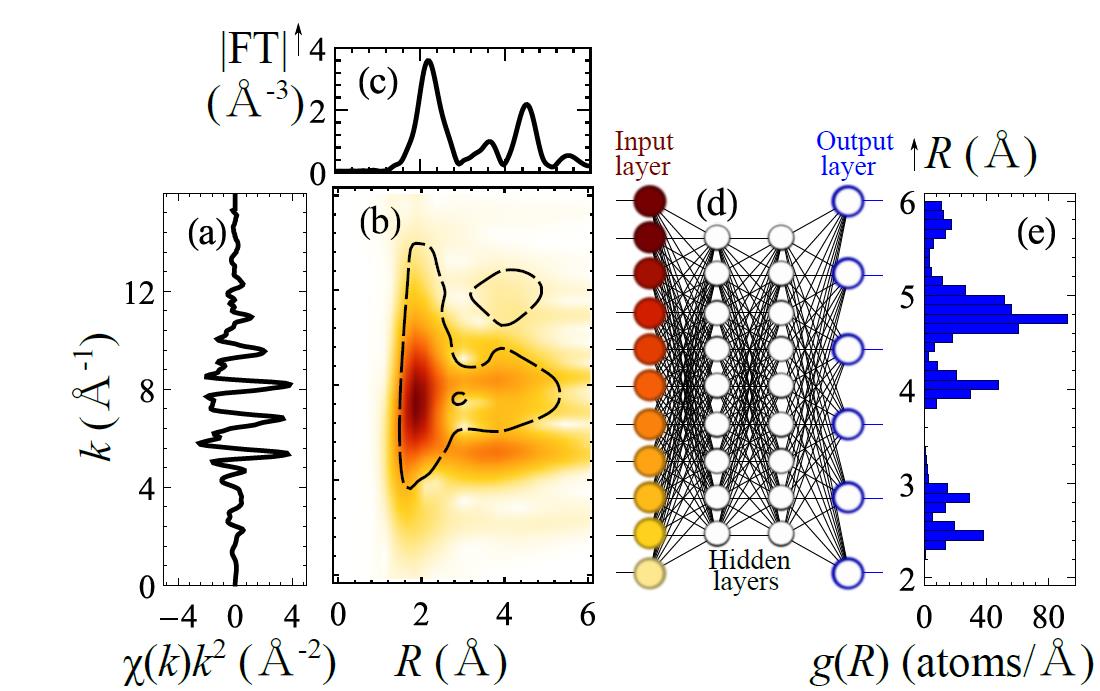- Home
-
Research Groups
Division Groups
- Artificial Photosynthesis
- Catalysis: Reactivity & Structure
- Electrochemical Energy Storage
- Electron- and Photo-Induced Processes for Molecular Energy Conversion
- Neutrino and Nuclear Chemistry
- Surface Electrochemistry and Electrocatalysis
Associated Groups
- Catalysis for Alternative Fuels Production
- Nanostructured Interfaces for Catalysis
- Structure and Dynamics of Applied Nanomaterials
- People
- Operations
- News
- Events

Structure and Dynamics of Applied Nanomaterials
Neural Network-based determination of radial distribution function from EXAFS spectra
 The
knowledge of the coordination environment around various atomic species
in many functional materials provides a key for explaining their
properties and working mechanisms. Many structural motifs and their
transformations are difficult to detect and quantify in the process of
work (operando conditions), due to their local nature, small changes,
low dimensionality of the material, and/or extreme conditions. Here we
use an artificial neural network approach to extract the information on
the local structure and its in situ changes directly from the x-ray
absorption fine structure spectra. We illustrate this capability by
extracting the radial distribution function (RDF) of atoms in ferritic
and austenitic phases of bulk iron across the temperature-induced
transition. Integration of RDFs allows us to quantify the changes in the
iron coordination and material density, and to observe the transition
from a body-centered to a face-centered cubic arrangement of iron atoms.
This method is attractive for a broad range of materials and
experimental conditions.
The
knowledge of the coordination environment around various atomic species
in many functional materials provides a key for explaining their
properties and working mechanisms. Many structural motifs and their
transformations are difficult to detect and quantify in the process of
work (operando conditions), due to their local nature, small changes,
low dimensionality of the material, and/or extreme conditions. Here we
use an artificial neural network approach to extract the information on
the local structure and its in situ changes directly from the x-ray
absorption fine structure spectra. We illustrate this capability by
extracting the radial distribution function (RDF) of atoms in ferritic
and austenitic phases of bulk iron across the temperature-induced
transition. Integration of RDFs allows us to quantify the changes in the
iron coordination and material density, and to observe the transition
from a body-centered to a face-centered cubic arrangement of iron atoms.
This method is attractive for a broad range of materials and
experimental conditions.
J. Timoshenko, A. Anspoks, A. Cintins, A. Kuzmin, J. Purans, A. I. Frenkel
Artificial neural network approach for characterizing structural transformations by X-ray absorption fine structure spectroscopy
Phys. Rev. Lett. 120, 225502 (2018)




